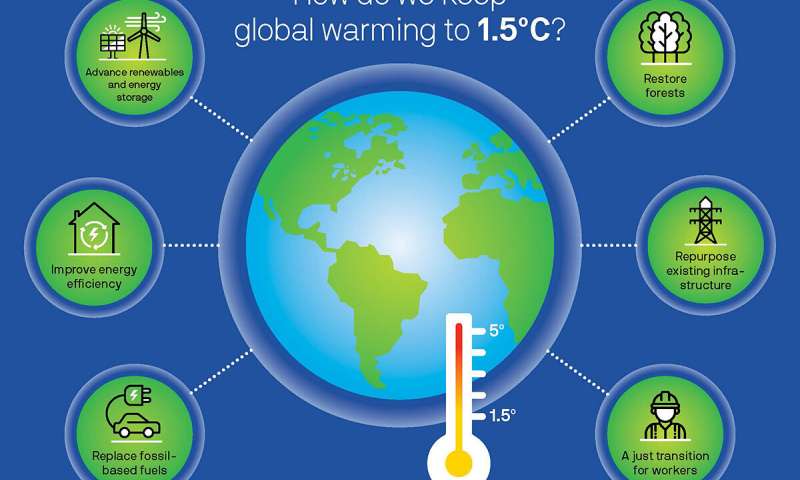State-of-the-art Climate Model Shows How We Can Solve Crisis
ENVIRONMENT, 28 Jan 2019
University of Technology, Sydney – TRANSCEND Media Service
21 Jan 2019 – We are already seeing the devastating consequences of global warming, with ever-rising sea levels, extreme storms, prolonged droughts and intensified bushfires. Now, after two years of research and modelling, scientists have come up with a groundbreaking new framework for achieving – and even beating – the target of limiting warming to 1.5°C.
The research by leading scientists at the University of Technology Sydney (UTS), the German Aerospace Center and the University of Melbourne, has been funded by the Leonardo DiCaprio Foundation (LDF) as part of its new One Earth initiative.
Welcoming the framework, LDF founder Leonardo DiCaprio says: “With the pace of urgent climate warnings now increasing, it’s clear that our planet cannot wait for meaningful action. This ambitious and necessary pathway shows that a transition to 100% renewable energy and strong measures to protect and restore our natural ecosystems, taken together, can deliver a more stable climate within a single generation.”
The Intergovernmental Panel on Climate Change (IPCC) Special Report warned last October that the planet must be kept below the dangerous temperature rise of 1.5°C above pre-industrial levels if we are to avoid a worsening of the climate-related impacts we are now seeing at 1°C. The 2016 Paris Climate Change Agreement set a target of keeping warming below 1.5°C.
This new research has produced the most detailed energy model to date – and the first to achieve negative emissions through natural climate solutions. Its proposed transition to 100% renewables by mid-century, along with steps such as reforestation, would not only have benefits for the climate but would also create millions of permanent jobs. The researchers say this could be achieved at about a quarter of the cost of current subsidies for fossil fuels.
The research models 72 regional energy grids in hourly increments through 2050 and includes a comprehensive assessment of available renewable resources such as wind and solar, along with configurations for meeting projected energy demand and storage most efficiently for all sectors over the next 30 years.
“Scientists cannot fully predict the future, but advanced modelling allows us to map out the best scenarios for creating a global energy system fit for the 21st century,” lead author Dr. Sven Teske, Research Director at UTS’s Institute for Sustainable Futures says. “With momentum around the Paris Agreement lagging, it’s crucial that decision-makers around the world can see that we can, in fact, meet global energy demand at a lower cost with clean renewables.”
The research will be taken to this week’s World Economic Forum in Davos. Dr. Teske discussed the work at the recent COP24 meeting, the 24th Conference of the Parties to the United Nations Framework Convention on Climate Change.
While climate scientists have created hundreds of models to help policymakers understand the impacts of climate change and how to mitigate them, nearly all of these models have relied upon technologies that are expensive and not proven to work at scale when seeking to achieve not just a cap on emissions but “negative” emissions, where the carbon in the atmosphere is reduced.
This model is the first to achieve the required negative emissions through natural climate solutions, including the restoration of degraded forests and other lands, along with a transition to 100% renewable energy by mid-century.
“Citing a growing body of research, we show that using land restoration efforts to meet negative emissions requirements, along with a transition to 100% renewable energy by 2050, gives the world a good chance of staying below the 1.5°C target,” Malte Meinshausen, founding director of the Climate and Energy College at the University of Melbourne and Potsdam Institute Fellow, says.
A transition to 100% renewables and the implementation of natural climate solutions offer additional benefits beyond keeping the climate system in check, the researchers say. The energy transition will be able to recycle our natural gas infrastructure and create millions of permanent jobs. Natural climate solutions could also dramatically increase sustainable livelihoods in the developing world, offering better water security and reduced soil erosion.
“Nature is the key to solving the climate crisis,” the Executive Director of the Leonardo DiCaprio Foundation, Justin Winters, says. “Currently, our wildlands and oceans absorb one-half of all CO2 emissions. While the renewable energy transition is imperative to solving the climate crisis, it isn’t enough. As this climate model shows, in order to keep the global temperature rise to no more than 1.5°C, we have to keep our natural carbon sinks intact, scale up restoration efforts and shift to regenerative agriculture.”
The proposed energy transition outlined in the climate model is estimated to cost about $1.7 trillion per year. That may sound like a lot, Dr. Teske says, but it pales in comparison to the vast subsidies that governments provide to prop up the polluting fossil fuels largely responsible for climate change. These are estimated at more than $5 trillion a year, or $10 million a minute every day, according to the IMF. We could be creating the clean energy future we so desperately need for a third of that cost.
___________________________________________________
The Climate Model will be published in Achieving the Paris Climate Agreement Goals: Global and Regional 100% Renewable Energy Scenarios with Non-energy GHG Pathways for +1.5°C and +2°C early this year. The book will be published by Springer Nature as an Open Access title.
Provided by: University of Technology, Sydney
DISCLAIMER: The statements, views and opinions expressed in pieces republished here are solely those of the authors and do not necessarily represent those of TMS. In accordance with title 17 U.S.C. section 107, this material is distributed without profit to those who have expressed a prior interest in receiving the included information for research and educational purposes. TMS has no affiliation whatsoever with the originator of this article nor is TMS endorsed or sponsored by the originator. “GO TO ORIGINAL” links are provided as a convenience to our readers and allow for verification of authenticity. However, as originating pages are often updated by their originating host sites, the versions posted may not match the versions our readers view when clicking the “GO TO ORIGINAL” links. This site contains copyrighted material the use of which has not always been specifically authorized by the copyright owner. We are making such material available in our efforts to advance understanding of environmental, political, human rights, economic, democracy, scientific, and social justice issues, etc. We believe this constitutes a ‘fair use’ of any such copyrighted material as provided for in section 107 of the US Copyright Law. In accordance with Title 17 U.S.C. Section 107, the material on this site is distributed without profit to those who have expressed a prior interest in receiving the included information for research and educational purposes. For more information go to: http://www.law.cornell.edu/uscode/17/107.shtml. If you wish to use copyrighted material from this site for purposes of your own that go beyond ‘fair use’, you must obtain permission from the copyright owner.

